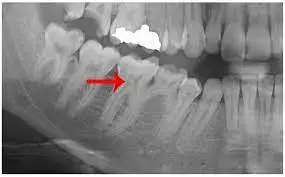- Home
- Medical news & Guidelines
- Anesthesiology
- Cardiology and CTVS
- Critical Care
- Dentistry
- Dermatology
- Diabetes and Endocrinology
- ENT
- Gastroenterology
- Medicine
- Nephrology
- Neurology
- Obstretics-Gynaecology
- Oncology
- Ophthalmology
- Orthopaedics
- Pediatrics-Neonatology
- Psychiatry
- Pulmonology
- Radiology
- Surgery
- Urology
- Laboratory Medicine
- Diet
- Nursing
- Paramedical
- Physiotherapy
- Health news
- Fact Check
- Bone Health Fact Check
- Brain Health Fact Check
- Cancer Related Fact Check
- Child Care Fact Check
- Dental and oral health fact check
- Diabetes and metabolic health fact check
- Diet and Nutrition Fact Check
- Eye and ENT Care Fact Check
- Fitness fact check
- Gut health fact check
- Heart health fact check
- Kidney health fact check
- Medical education fact check
- Men's health fact check
- Respiratory fact check
- Skin and hair care fact check
- Vaccine and Immunization fact check
- Women's health fact check
- AYUSH
- State News
- Andaman and Nicobar Islands
- Andhra Pradesh
- Arunachal Pradesh
- Assam
- Bihar
- Chandigarh
- Chattisgarh
- Dadra and Nagar Haveli
- Daman and Diu
- Delhi
- Goa
- Gujarat
- Haryana
- Himachal Pradesh
- Jammu & Kashmir
- Jharkhand
- Karnataka
- Kerala
- Ladakh
- Lakshadweep
- Madhya Pradesh
- Maharashtra
- Manipur
- Meghalaya
- Mizoram
- Nagaland
- Odisha
- Puducherry
- Punjab
- Rajasthan
- Sikkim
- Tamil Nadu
- Telangana
- Tripura
- Uttar Pradesh
- Uttrakhand
- West Bengal
- Medical Education
- Industry
CVD patients not more likely to develop pulp calcifications compared to non-CVD patients

There exists a low level of evidence to show that cardiovascular disease patients are more prone to have pulp calcifications in comparison to non-CVD patients according to a recent study published in the Journal of Evidence-Based Dental Practice.
This systematic review and meta-analysis were performed to evaluate the association between pulp calcifications (PC) and cardiovascular disease (CVD).
Five databases (PubMed, Scopus, Embase, Web of Science and ProQuest) were searched to identify articles. Quality assessment of the selected articles was done using Joanna Briggs Institute critical appraisal tool and the inter-examiner agreement was calculated using the Cohen-Kappa test. The random-effects maximum likelihood model was used to evaluate the association between the conditions. Trim-and-fill funnel plot was used to evaluate the presence of publication bias. The level of evidence was evaluated using the Grading of Recommendations Assessment, Development, and Evaluation (GRADE) tool.
The results of the study are:
- A total of 2487 articles were identified from the initial search.
- Ten articles were included in this review of which 7 were cross-sectional and 3 were case-control studies.
- Eight articles had a low risk of bias (RoB), and one article each had a moderate and high RoB. inter-examiner reliability score was 0.8592.
- Seven articles reported a statistically significant positive association between CVD patients and PC. Two articles reported a non-significant positive association and one article reported no association between the same.
- A significant difference was observed in favour of CVD patients possessing more pulp calcifications in comparison to non-CVD patients with an OR of 4.30.
- Asymmetry in the Trim-and-fill funnel Plot suggested the presence of publication bias.
- GRADE analysis demonstrated low certainty of the evidence for the overall sample.
Thus, there exists a low level of evidence to show that CVD patients are more prone to have pulp calcifications in comparison to non-CVD patients.
Reference:
Saumya-Rajesh Parashar, Kinnari Kasabwala, Selvakarthikeyan Ulaganathan, Ashritha MCV, Priyal Khandelwal, Selva Arockiam, Velmurugan Natanasabapathy. ASSOCIATION OF PULP CALCIFICATIONS AND CARDIOVASCULAR DISEASE: A SYSTEMATIC REVIEW AND META-ANALYSIS. Journal of Evidence-Based Dental Practice, Volume 22, Issue 2, 2022, 101707, ISSN 1532-3382, https://doi.org/10.1016/j.jebdp.2022.101707.
Dr. Shravani Dali has completed her BDS from Pravara institute of medical sciences, loni. Following which she extensively worked in the healthcare sector for 2+ years. She has been actively involved in writing blogs in field of health and wellness. Currently she is pursuing her Masters of public health-health administration from Tata institute of social sciences. She can be contacted at editorial@medicaldialogues.in.
Dr Kamal Kant Kohli-MBBS, DTCD- a chest specialist with more than 30 years of practice and a flair for writing clinical articles, Dr Kamal Kant Kohli joined Medical Dialogues as a Chief Editor of Medical News. Besides writing articles, as an editor, he proofreads and verifies all the medical content published on Medical Dialogues including those coming from journals, studies,medical conferences,guidelines etc. Email: drkohli@medicaldialogues.in. Contact no. 011-43720751


